Lt Gen JS Bajwa – Editor Indian Defence Review (IDR) had the unique privilege to interview the Chief of Air Staff Air Chief Marshal R K S Bhadauria, prior to the Air Force Day on 8th October 2020. Details of the candid response of the Chief of Air Staff to the IDR’s pointed questions are given below:-
Q1. Rafale begins the induction into the IAF in July 2020. Will 36 Rafale aircraft sufficiently compensate for the sum of capabilities of three times the number of Mig-21 Bison serving in the IAF?
Ans. It would not be accurate to directly compare capabilities of own aircraft which are of completely different generations to arrive at their potency by numbers. Operational Parameters of aircraft are compared to assess theoretical performance against adversarial platforms. While there is no doubt that the Rafale is a more potent platform than the Bison, they would be pitted against aircraft of comparable class such as advanced F16s, J-20 & SU-35so we plan to work towards a mix of capabilities in the overall force structure.
Q2. Tejas, despite its deficiencies, is a significant achievement of the HAL. India dropped out of the joint design team with Russia for the 4++/ 5 generation PAK FA T-50. An emergent demand of 12 Su 30MKI’s and 21 MiG 29 being placed with Russia would imply that the IAF is not looking at the Su-57 or any other 5th Generation aircraft from Russia with full technology transfer?
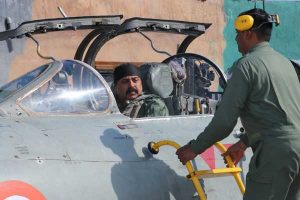 Ans. The IAF has supported the design and development of the AMCA programme. AMCA programme will cater for the requirements in the fifth generation fighter aircraft with advanced features. Current Su-30 and MiG-29 aircraft induction plan is not in conflict with fifth generation aircraft plans. DRDO is undertaking detailed design studies based on specifications and requirements of the IAF. We are certain that the way ahead lies in self-reliance and are actively supporting the indigenous efforts in this direction.
Ans. The IAF has supported the design and development of the AMCA programme. AMCA programme will cater for the requirements in the fifth generation fighter aircraft with advanced features. Current Su-30 and MiG-29 aircraft induction plan is not in conflict with fifth generation aircraft plans. DRDO is undertaking detailed design studies based on specifications and requirements of the IAF. We are certain that the way ahead lies in self-reliance and are actively supporting the indigenous efforts in this direction.
Q3. The IAF now has 10 Apache Attack Helicopters. Before these the Air Force had Mi-24 and Mi-35 Attack Helicopters. The Army’s experience of coordinated attack helicopter operations has been not too resounding. Jointmanship is not the solution. The intimacy between manoeuvre forces and attack helicopter operations unambiguously warrants that these should be with the Army Aviation. Why did IAF still want these in its inventory?
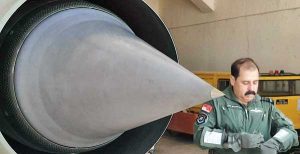 Ans. Your implied statement that there has been no coordination with the Army in the use of attack helicopters is not an accurate at all. The attack helicopter fleet of the IAF has always trained and exercised along with Indian Army formations for ensuring co-ordination and synergy.
Ans. Your implied statement that there has been no coordination with the Army in the use of attack helicopters is not an accurate at all. The attack helicopter fleet of the IAF has always trained and exercised along with Indian Army formations for ensuring co-ordination and synergy.
The Apache is a versatile weaponised platform suitable for support of Army and Destruction of Enemy Air Defence/Suppression of Enemy Air Defence/Air Interdiction missions amongst many others. Locking up these capable combat helicopters for as purely strike corps support role is nether envisaged nor desirable. The IAF has vast experience in utilisation of combat platforms including helicopters, and is ideally suited to exploit all the capabilities of this effective weapon system. This is done through effective and operationally relevant peace time training, for which the IAF is well suited and resourced. While the Apache will be utilised to its utmost potential and ability, we are clear that the Indian Army will be provided all effort required by them for their wartime operational requirements. We have already operationalised the unit in a short timeframe, and they are presently operating alongside army formations on the frontlines.
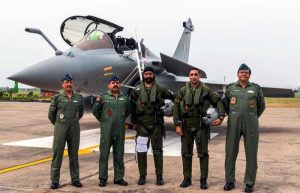
Chief of the Air Staff, Air Chief Marshal RKS Bhadauria, Air Officer Commanding-in-Chief Western Air Command, Air Marshal B Suresh and Air Officer Commanding Air Force Station Ambala along with the pilots of the first Rafale aircraft that had arrived at Air Force Station Ambala on 29 Jul 20
Q4. Pakistan has an Air Defence Corps directly under the General Headquarters. The Pakistani Air Defence proved effective in the post-Balakot air skirmish. Indian Air Defence assets were absent in the Tactical Battle Area. Is the Pak system able to provide a more responsive anti-aircraft defence in the Tactical Battle Area? How will the Air Defence Command address this issue? The S-400 Triumf is expected to make an entry in India. How will it change the Air Defence environment in India?
Ans. In sharp constant to what you have implied, it is a fact that the PAF AD was found totally ineffective during IAF bold and precise attack on 26 Feb 19. There was no response whatsoever and our fighters returned home unchallenged after striking their targets.
On the other hand, the air skirmish the next morning was precipitated by an alert IAF air defence, which identified and thwarted PAF’s attempt to carry out a mass raid in Indian airspace.
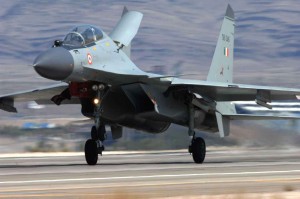 The IAF AD structure has evolved based on our threat perception and geostrategic imperatives. To remain contemporary, we constantly transform and align the structures meeting futuristic battle space requirements. An exercise towards formation of an integrated joint AD Command is already underway, which in conjunction with the joint commands will synergise the conduct of operations and increase op effectiveness.
The IAF AD structure has evolved based on our threat perception and geostrategic imperatives. To remain contemporary, we constantly transform and align the structures meeting futuristic battle space requirements. An exercise towards formation of an integrated joint AD Command is already underway, which in conjunction with the joint commands will synergise the conduct of operations and increase op effectiveness.
With its enhanced range and ability to target deep across the border, the induction of the S400 will bring about a paradigm shift in our capability and concept of operations.
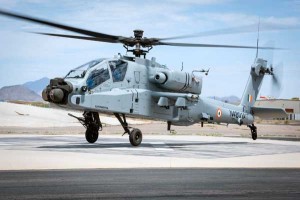 Q5. The charter of the Defence Space Agency set up in Bangalore would include protection of the military space assets, securing all communications, insulating the local environment for AWACS and uninterrupted use PGM’s. Without our own satellite navigation network how secure are the above presently?
Q5. The charter of the Defence Space Agency set up in Bangalore would include protection of the military space assets, securing all communications, insulating the local environment for AWACS and uninterrupted use PGM’s. Without our own satellite navigation network how secure are the above presently?
Ans. The indigenous NavIC system is planned to be integrated into existing platforms through a clearly defined roadmap of modifications and upgrades. In addition, the specific requirements of the Armed forces across the envisaged battle spacein the areas of Position, Navigation and timing is expected to be met in a phased manner through launch of more satellites.
Q6. Intelligence, Surveillance and Reconnaissance (ISR) are a major responsibility of the Air Force. With the current advances in technology and payload sophistications, Drones may be more suited for round the clock ISR tasks. How does the IAF see such a role being undertaken in the future?
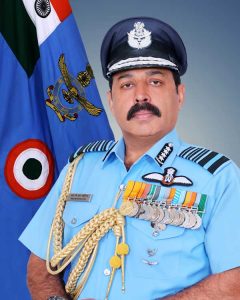 Ans. Drones, or Remotely Piloted Aircraft, have an advantage of longer loiter time and persistent look capabilities over areas of interest, though it must be noted that they are most effective in uncontested air space. Drones, or Remotely Piloted Vehicles are already being utilised for ISRin combination with other assets. Our plans in this regard are being constantly updated as we induct new technology and acquire newer systems.
Ans. Drones, or Remotely Piloted Aircraft, have an advantage of longer loiter time and persistent look capabilities over areas of interest, though it must be noted that they are most effective in uncontested air space. Drones, or Remotely Piloted Vehicles are already being utilised for ISRin combination with other assets. Our plans in this regard are being constantly updated as we induct new technology and acquire newer systems.
Q7. Autonomous drones in swarms can be a major threat to static assets nominated as VA’s and VP’s. Does the IAF visualise this as a threat and how would it be tackled?
Ans. Swarm drones are a threat to high value static assets and field deployments especially those close to the border because of very little early warning available to counter them. We have studied this aspect closely and are examining options to procure integrated systems capable of detecting such threats and neutralizing them. Solutions involving kinetic and directed energy weapons coupled with suitable sensors are being developed by DRDO. We are also collaborating with the private sector who have come up with excellent innovative solutions in this regard as part of Innovation for Defence Excellence (IDEX) program, launched by Defence Innovation Organisation.




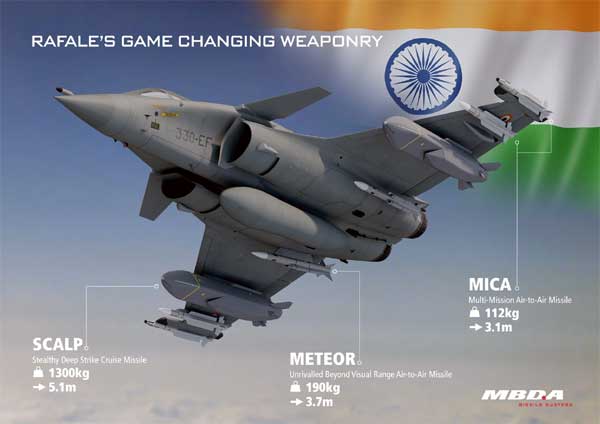
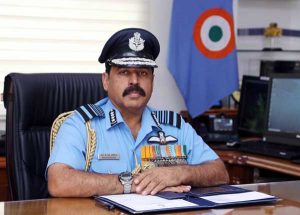
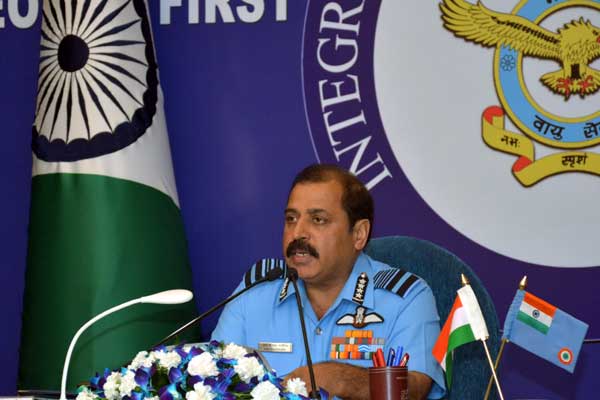

Excellent answers by the CAS i compliment him for the clarity of this thought and power of expression. The interviewer on the other hand, has betrayed the typical one dimensional understanding that Army officers and especially generals have consistently displayed. The single biggest impediment to jointness. His accusatorial question to the CAS, about the attack helicopters was not only in extremely poor taste (can’t imagine a single such question ever being asksd of an army chief), but more importantly, it showed the complete lack of understanding of an attack heptr’s potential in battle in the minds of a retd Lt Gen. Handing over Apaches to the army, would be a colossal waste.
The same lack of understanding displayed in the question on the skirmish in 2019. Glad the CAS educated him.
IDR, you need to find people who understand domains, before you let them interview Chiefs.
Gaurav Tripathi,
Thank you for your view point. However, to emphasis your view point you don’t need to condemn another view!! To expect everyone to have a common view is utopia.
In a similar question to a former CAS many years back he was quite happy to hand over attack and utility helicopters to the Army Aviation Corps. This Corps was raised for this purpose.
Having experienced first hand the practical difficulties at the operational level this is not in any way belittling the efficiency and capability of the Air Force.
So your tirade of condemnation was unwarranted and in poor taste.
Regards
Gen Bajwa
General,
He has a point. Your questions did belie a lack of understanding. Questions must never be accusatorial. Least of all to a Chief.
His ‘tirade’ could have been a bit more mellow, but the point he highlighted is valid. Your understanding of the roles of an attack heptr was myopic.
Better standards are expected.
Jai Hind Ashish,
You would be aware that the Army Aviation Corps has also got six Apaches. The then Army Chief had been told that the 20 Apaches will be allotted to the Army Aviation Corps. But was later changed and allotted to the AF.
You can grant me having the knowledge and experience in handling these resources in operational situations. The AF has a larger and vital role in the strategic realm.
Regards
I think it’s time we looked beyond Rafael now that this plane seems to have answered some basic and immediate security needs. We need to look at security scenarios 20/30 years ahead. This would involve projecting geo security models which would play out in the next 30 – 50 years. Could our own defence infrastructure be able to come up with designs and airplanes to meet the security threats of the future.